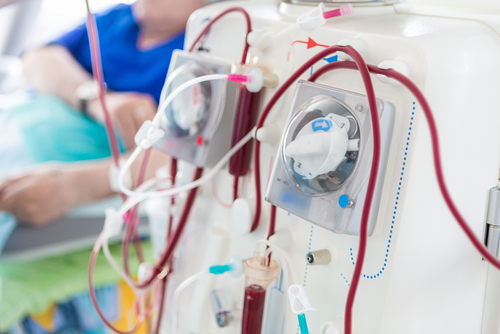
With a dedicated dialysis unit, we offer state-of-the-art hemodialysis and peritoneal dialysis services for patients with renal failure. Our team ensures safe, efficient, and comfortable dialysis sessions, emphasizing patient well-being throughout the treatment process.
Dialysis is a medical treatment used to replicate some of the functions of healthy kidneys when a person's own kidneys can no longer perform these tasks effectively. It is primarily employed for individuals suffering from end-stage kidney disease (ESKD) or acute kidney injury (AKI) where the kidneys are unable to filter waste products and excess fluids from the blood adequately.
Dialysis helps maintain the body's balance of electrolytes, such as potassium, sodium, and calcium, as well as controlling blood pressure and removing waste products from the body.
There are two primary types of dialysis:
Hemodialysis: This involves using a machine called a dialyzer or hemodialyzer to filter blood outside the body. During hemodialysis, blood is pumped from the patient's body into the dialyzer, which cleanses the blood by removing waste products and excess fluids. The filtered blood is then returned to the body.
Peritoneal Dialysis: This method uses the lining of the abdomen (peritoneum) as a natural filter. A cleansing solution (dialysate) is introduced into the abdomen through a catheter. Waste products and excess fluids pass from the blood vessels in the peritoneal lining into the dialysate. After a certain period, the used dialysate is drained, removing waste, and fresh solution is introduced.
Patients on dialysis typically undergo treatments several times a week, with the duration and frequency determined by their specific needs and the type of dialysis prescribed by their healthcare provider.
While dialysis is life-saving, it's important to note that it's a substitute for normal kidney function and can have limitations and side effects. For many individuals with end-stage kidney disease, kidney transplantation may eventually be considered as a more permanent solution compared to long-term dialysis.